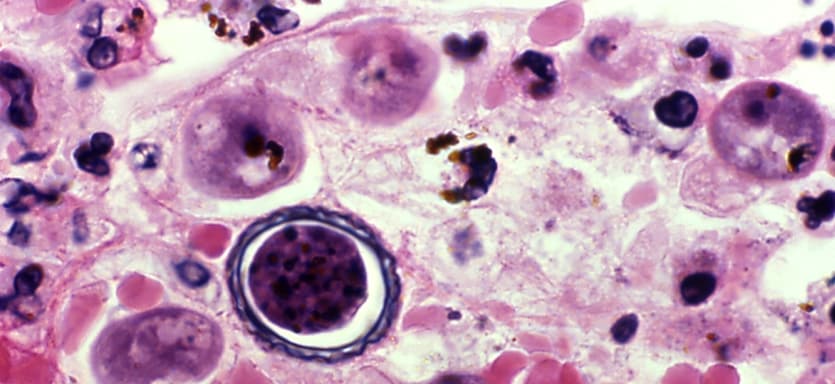Acanthamoeba - Granulomatous Amebic Encephalitis (GAE); Keratitis

Acanthamoeba is a microscopic, free-living ameba, or amoeba* (single-celled living organism), that can cause rare**, but severe infections of the eye, skin, and central nervous system. The ameba is found worldwide in the environment in water and soil. The ameba can be spread to the eyes through contact lens use, cuts, or skin wounds or by being inhaled into the lungs. Most people will be exposed to Acanthamoeba during their lifetime, but very few will become sick from this exposure. The three diseases caused by Acanthamoeba are:
- Acanthamoeba keratitis – An infection of the eye that typically occurs in healthy persons and can result in permanent visual impairment or blindness.
- Granulomatous Amebic Encephalitis (GAE) – A serious infection of the brain and spinal cord that typically occurs in persons with a compromised immune system.
- Disseminated infection – A widespread infection that can affect the skin, sinuses, lungs, and other organs independently or in combination. It is also more common in persons with a compromised immune system.
Image: This photomicrograph depicted a magnified view of brain tissue within which was a centrally located Acanthamoeba spp. cyst. Credit: DPDx
*About the Term “Ameba”
In U.S. English, the single-celled living organism described here is an ameba. The word amoeba, with an “o”, is used as part of a scientific genus name (such as Amoeba or Acanthamoeba). In British English, both the generic organism term and genera names are spelled amoeba with an “o”.
**Rare Disease
There is no universal definition of a “rare disease” but the U.S. Rare Disease Act of 2002external icon defined a rare disease as affecting less than 200,000 people in the U.S. and this definition has been adopted by the National Institutes of Health, Genetic and Rare Diseases Information Centers.external icon

